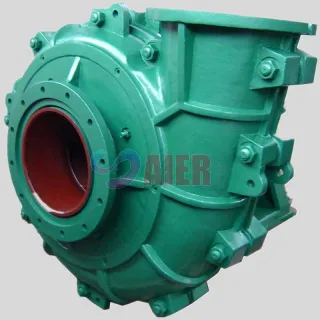Nov . 10, 2024 19:45 Back to list
Top Manufacturer of Submersible Pumps for Slurry Applications and Solutions
Submersible Pumps for Slurry A Comprehensive Overview for Manufacturers
In the industrial world, the efficient movement of liquids, especially challenging materials like slurry, is critical for many processes. This makes the selection of the right type of pump extremely important. Submersible pumps, in particular, have gained popularity for their ability to handle slurry effectively. This article explores the features, advantages, and considerations for manufacturers of submersible pumps designed specifically for slurry applications.
Understanding Slurry and Its Challenges
Slurry, a mixture of liquid and solid particles, is commonly found in industries such as mining, wastewater treatment, construction, and agriculture. The solid content in the slurry can vary widely, from fine particles to larger chunks. This variability presents unique challenges for pumping systems, including wear and tear on equipment, blockages, and fluctuations in viscosity. To tackle these challenges efficiently, manufacturers have developed specialized submersible pumps.
What are Submersible Pumps?
Submersible pumps are designed to be submerged in the fluid they are pumping. They consist of a motor attached to a pump body, which allows them to operate underwater. This design enables the pumping of fluids from deep wells, pits, or tanks without the need for additional priming systems, which can save both time and energy.
Key Features of Submersible Pumps for Slurry
1. Robust Construction Submersible pumps for slurry are typically made from high-grade materials like stainless steel or cast iron. These materials offer durability and resistance to corrosion and wear from abrasive substances.
2. Powerful Motor These pumps come equipped with high-performance motors that can handle the thick, viscous nature of slurry without losing efficiency. The motors often feature sealed designs to prevent damage from moisture.
3. Specialized Impellers The impellers in slurry submersible pumps are engineered to handle solid particles effectively. They are designed to minimize clogging and promote efficient flow, even with challenging mixtures.
4. Variable Flow Rates Many submersible pumps offer adjustable flow rates to suit different operational requirements. This flexibility makes them suitable for various applications, from dewatering construction sites to transporting waste in treatment facilities.
5. Ease of Maintenance Manufacturers focus on making these pumps easy to maintain. Replaceable wear parts and accessible designs help ensure longevity and reduced downtime.
submersible pump for slurry manufacturer

Advantages of Submersible Pumps for Slurry
- Efficiency By operating below the surface, submersible pumps experience less hydraulic loss, making them more energy-efficient than traditional pumps that require suction. - Reduced Noise Levels Being submerged helps in reducing noise levels significantly, which is a great advantage in urban or noise-sensitive environments.
- Space-Saving Design Since these pumps are installed below the fluid level, they require less space than surface-mounted pumps, which can be beneficial in limited area installations.
- Versatility Submersible slurry pumps can be used in various applications, including mining, sewage treatment, dredging, and more, emphasizing their versatility.
Considerations for Manufacturers
When developing submersible pumps for slurry applications, manufacturers need to consider several factors.
- Material Selection Choosing the right materials that resist wear from abrasive particles and withstand corrosive environments is crucial for longevity. - Energy Efficiency As energy costs rise, manufacturers must design pumps that not only perform well but also minimize energy consumption.
- Environmental Considerations Manufacturers should adhere to environmental regulations and sustainability practices. Innovations that reduce energy usage and incorporate recyclable materials can set a company apart.
- Customization Understanding the diverse needs of different industries allows manufacturers to produce customizable solutions tailored to specific slurry characteristics.
Conclusion
Submersible pumps for slurry applications represent a vital component in various industrial processes. Manufacturers focusing on quality construction, efficiency, and adaptability can make a significant impact in the market. By addressing the unique challenges posed by slurry, these pumps help ensure smooth operations across multiple sectors while paving the way for innovations that meet the demands of a changing world. Through ongoing research and development, the next generation of submersible pumps will likely bring further enhancements that continue to improve performance and sustainability in slurry management.
-
Top Submersible Pump Companies High Quality Manufacturers & Suppliers in China
NewsJul.08,2025
-
High Quality Seal for 5 Inch Dredge Pump Reliable China Manufacturer & Supplier
NewsJul.08,2025
-
High-Efficiency Slurry Sand Pump from Leading China Manufacturer – Durable & Reliable Solutions
NewsJul.07,2025
-
High-Quality Slurry Pump Made in China Durable Steel Mill Slurry Pump & Parts
NewsJul.07,2025
-
High Quality Excavator Dredge Pump Manufacturer & Suppliers from China – Reliable, Durable, Efficient Solutions
NewsJul.07,2025
-
Wholesale Slurry Pump Closed Impeller Supplier High Efficiency China Slurry Pump Closed Impeller
NewsJul.06,2025
